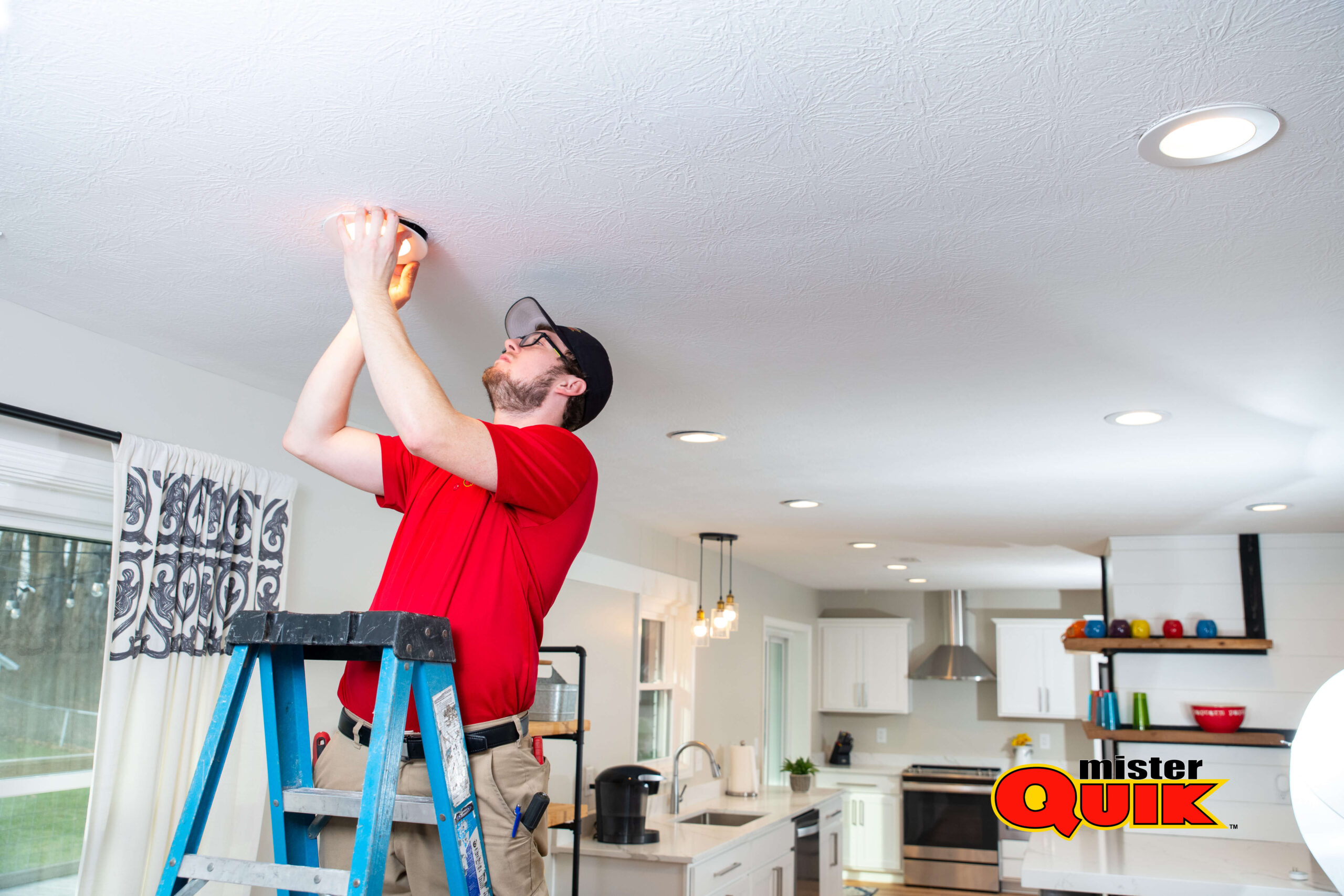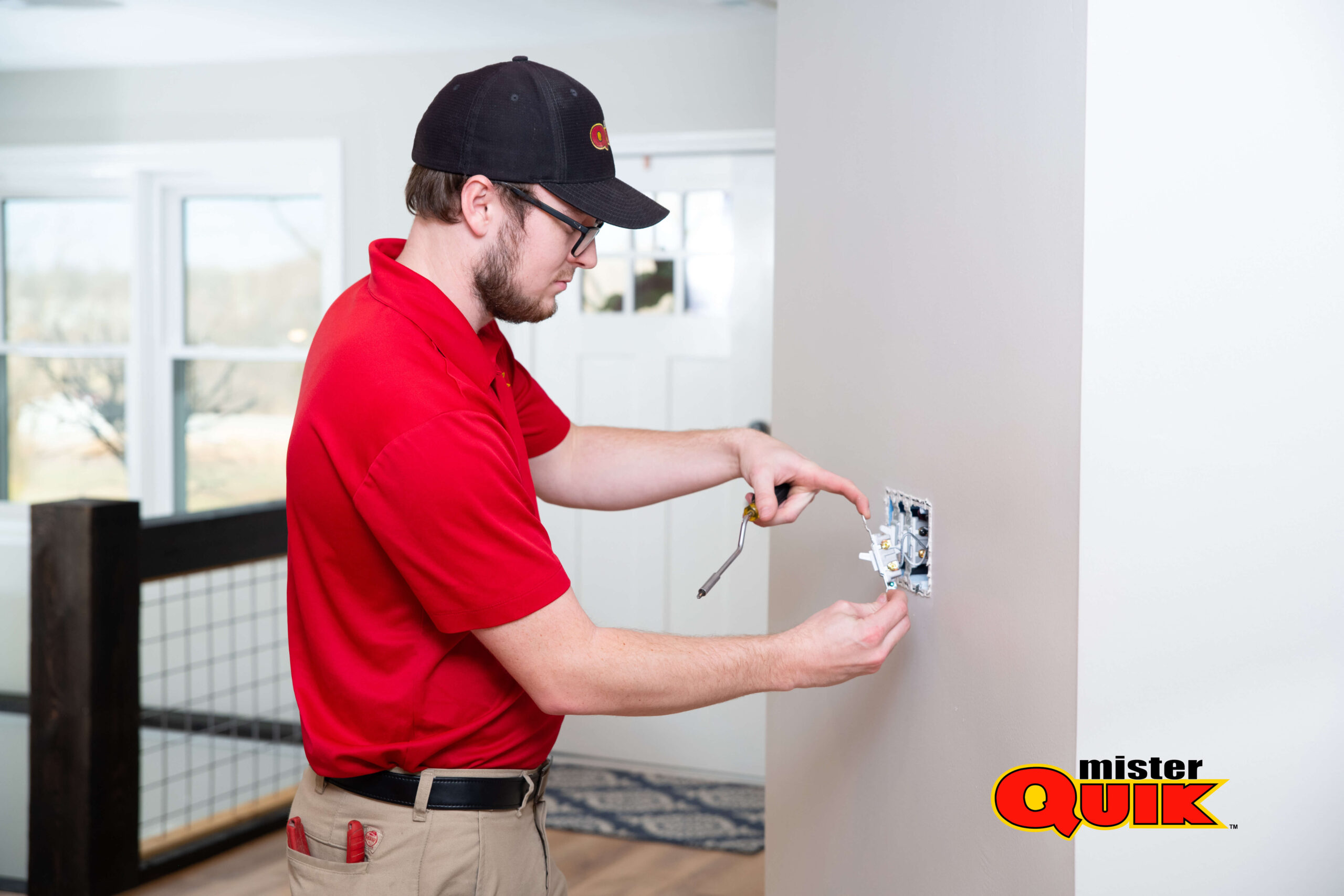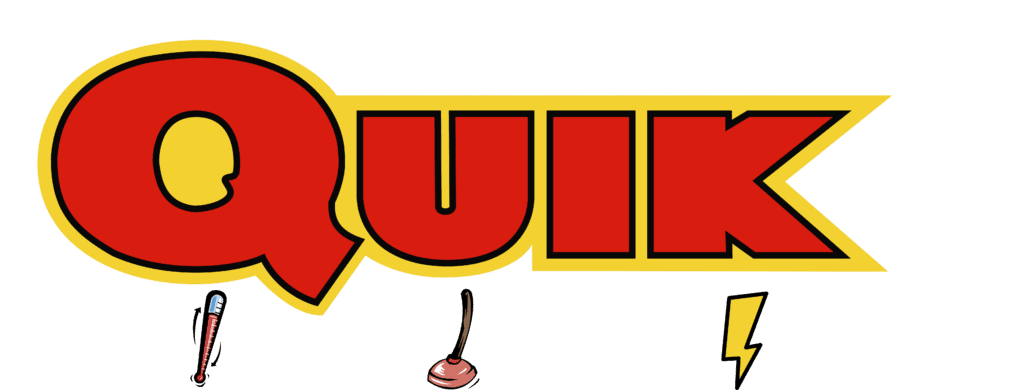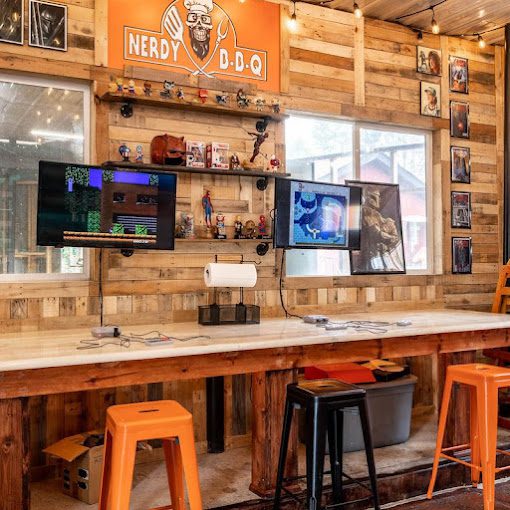Anderson Lighting Fixtures
Schedule on your own without making a call. Click the button below to get started!

Lighting Fixtures Near Me
Are you searching for lighting fixtures to illuminate your home or office space? Look no further than Mister Quik Home Services for a wide selection of high-quality lighting solutions near you. Here’s why our lighting fixtures stand out:
Variety of Styles: Whether you prefer modern, traditional, or contemporary lighting, we offer a diverse range of fixtures to suit any aesthetic preference. From elegant chandeliers to sleek pendant lights, we have options to enhance the ambiance of any room.
Energy-Efficient Options: Save on energy costs and reduce your carbon footprint with our energy-efficient lighting fixtures. We carry LED and CFL options that provide bright illumination while consuming less energy, helping you save money on your utility bills.
Indoor and Outdoor Solutions: Illuminate both the interior and exterior of your property with our indoor and outdoor lighting fixtures. Brighten up living spaces, kitchens, bathrooms, and bedrooms with our indoor options, while our outdoor fixtures can enhance your landscape and provide security lighting.
Durable Construction: Our lighting fixtures are built to last, with durable materials and quality craftsmanship that ensure long-term reliability. Our fixtures are designed to withstand the test of time and maintain their aesthetic appeal.
Customization Possibilities: Personalize your lighting design with customizable options available for many of our fixtures. Choose from different finishes, sizes, and features to create a lighting solution tailored to your specific needs and preferences.
Professional Installation Services: Let our team of experienced electricians handle the installation of your new lighting fixtures for you. With meticulous attention to detail and adherence to safety standards, we ensure that your fixtures are installed correctly and function flawlessly.
Competitive Pricing: Enjoy competitive pricing on our lighting fixtures, ensuring that you get exceptional value for your investment. Whether you’re updating a single room or renovating an entire property, our affordable options make it easy to illuminate your space without breaking the bank.
Discover the perfect lighting fixtures for your home or business at Mister Quik Home Services. With our diverse selection, energy-efficient options, indoor and outdoor solutions, durable construction, customization possibilities, professional installation services, and competitive pricing, we’re your trusted source for lighting fixtures near you. Visit us today to explore our inventory and brighten up your space with style and functionality.
Choosing Lighting for your Home
Lighting plays a vital role in creating the atmosphere and functionality of your living space. It can impact your mood, productivity, and even your energy bills. Choosing the right lighting for your home requires considering various factors, from the type of fixture to the light bulb itself. Here’s a guide to help you navigate the world of home lighting:
Identify the purpose of the room:
Different rooms have different lighting needs. Kitchens require bright task lighting for food preparation, while bedrooms need softer, ambient lighting for relaxation.
Layering is key:
Combine different types of lighting in a room, such as overhead lighting, task lighting, and accent lighting, to create a layered and versatile lighting scheme.
Consider the style:
Choose fixtures that complement your existing décor and personal taste. From modern and minimalist to classic and traditional, there's a wide variety of styles to suit any preference.
Size and scale:
Select fixtures that are proportional to the size of the room. Overly large fixtures can overwhelm a small space, while small fixtures might be ineffective in a larger room.
LED lights:
The most energy-efficient option, offering long lifespan, high light quality, and various color temperatures.
Incandescent lights:
Traditional and affordable, but less energy-efficient and have a shorter lifespan.
CFL lights:
More energy-efficient than incandescent but contain mercury and require special disposal.
Dimming capabilities:
Consider dimmers for added control over the light's intensity and creating different moods.
Smart lighting:
Explore smart lights that can be controlled remotely through your smartphone or voice assistants, offering increased convenience and potential energy savings.
If a light fixture is wired incorrectly, it can lead to various safety hazards and operational issues. Common problems include short circuits, electrical shocks, and damage to the fixture itself. Incorrect wiring may cause the light to flicker, not turn on, or operate erratically. Additionally, it can overload the circuit, potentially causing a fire hazard. It is crucial to follow proper electrical wiring guidelines and consult a professional electrician if unsure, to ensure the safe and effective operation of light fixtures.
In a standard household electrical wiring setup, the hot wire in a light fixture is typically the one colored black or red. The hot wire carries the electrical current from the power source to the light fixture, providing the necessary energy for the light to function. It is crucial to identify and handle electrical wires with caution, ensuring proper safety measures such as turning off the power before installation or maintenance work to avoid the risk of electric shock or other hazards. If uncertain, it is advisable to consult a qualified electrician from Mister Quik Home Services for assistance.
Installing a ceiling light without existing wiring can be challenging, as it typically requires running new electrical wires from the electrical panel to the desired location. This task involves a thorough understanding of electrical systems and may require hiring a licensed electrician to ensure safety and compliance with local building codes. Alternatives such as battery-operated or plug-in ceiling lights may be considered for areas without existing wiring, but these options may not provide the same level of illumination or permanence as hardwired fixtures. It is crucial to prioritize safety and consult with a professional if uncertain about electrical work to avoid potential hazards.
The number of light fixtures that can be on one circuit depends on various factors, including the wattage of the fixtures and the circuit’s amperage rating. In general, a standard 15-amp circuit can typically support around 1800 watts, while a 20-amp circuit can handle about 2400 watts. To determine the maximum number of light fixtures, divide the total wattage of the fixtures by the circuit’s capacity. It’s crucial not to exceed the circuit’s limit to prevent overloading and potential safety hazards. Additionally, local electrical codes and regulations may impose specific restrictions, so it’s advisable to consult with a qualified electrician from Mister Quik Home Services for accurate guidance based on the specific circumstances and location.
In a typical light fixture, there are three wires: the hot wire (usually black or red), the neutral wire (usually white), and the ground wire (usually green or bare copper). The hot wire carries the electric current from the power source to the light fixture, providing the necessary energy for illumination. The neutral wire completes the electrical circuit by returning the current to the power source. The ground wire is a safety feature that provides a path for electrical faults to safely dissipate, reducing the risk of electrical shock. Together, these three wires facilitate the proper functioning and safety of a light fixture within an electrical system.
Energy Efficient Lighting Fixtures
With a growing focus on sustainability and energy savings, energy-efficient lighting fixtures are becoming increasingly popular. Here are some of the top options:


- Most energy-efficient lighting option, using up to 80% less energy than traditional incandescent bulbs.
- Longer lifespan, lasting 25 to 50 times longer than incandescent bulbs.
- Available in various color temperatures (warm white, cool white, daylight) to suit different needs.
- Initial cost might be slightly higher, but significant energy savings outweigh the initial investment over time.
- More energy-efficient than incandescent bulbs, using up to 75% less energy.
- Longer lifespan than incandescent bulbs, lasting 6 to 10 times longer.
- Contains mercury, requiring proper disposal at designated recycling centers.
- May take some time to reach full brightness.
Choosing energy-efficient lighting fixtures not only helps the environment but also reduces your energy bills in the long run.
Smart Lighting Fixtures
Smart lighting fixtures are revolutionizing the way we control and use lighting in our homes. Here’s what you need to know:


Can be controlled remotely through smartphones, tablets, or voice assistants like Google Assistant or Amazon Alexa. Offer scheduling options to turn lights on/off automatically or create lighting routines. Some allow dimming and color changing capabilities, enabling personalized lighting experiences.


Increased convenience and control over your home lighting. Potential energy savings through automation and scheduling. Can enhance security by creating the illusion of occupancy when you're away.


Requires a compatible smart home system or hub. May come at a higher initial cost compared to traditional fixtures. Smart lighting offers a modern and convenient way to manage your home's lighting, potentially contributing to energy savings and increased security.
led vs incandescent lighting
When choosing light bulbs, understanding the key differences between LED and incandescent options is crucial:
LED (Light Emitting Diode):
Pros:
- Most energy-efficient, using up to 80% less energy than incandescent bulbs.
- Lasts 25-50 times longer than incandescent bulbs.
- Emits little heat, reducing cooling costs.
- Available in various color temperatures and dimming options.
- Generally less expensive than LED bulbs initially.
- Emits warm light preferred by some users.
- Instantaneous on/off without warm-up time.
Cons:
- Uses significantly more energy compared to LED bulbs, leading to higher electricity bills.
- Short lifespan, needing frequent replacements compared to LEDs.
- Emits heat, contributing to higher cooling costs in warmer climates.
- Limited dimming capabilities compared to LED options.
In conclusion, while LED bulbs have a slightly higher upfront cost, their superior energy efficiency, long lifespan, and diverse features make them a more sustainable and cost-effective choice in the long run. However, if the initial cost is a major concern and the warm glow of incandescent lighting is preferred, incandescents can still be used for occasional or decorative purposes.
Lighting Fixture Wiring
It’s crucial to note that electrical work can be hazardous and should only be attempted by qualified electricians. If you’re not comfortable with electrical work, always consult a professional from Mister Quik Home Services to ensure safe and proper installation of lighting fixtures.
However, if you possess the necessary knowledge and experience for electrical work, here’s a general overview of lighting fixture wiring:
Always ensure the circuit powering the light fixture is switched off at the breaker box before proceeding.
Connect the black wire from the fixture to the black wire in the electrical box, and the white wire from the fixture to the white wire in the box. If your fixture has a ground wire (typically bare copper), connect it to the green or bare copper ground wire in the box.
Use wire nuts of the appropriate size to securely connect the wires together, twisting the wires tightly before capping them with the nut.
Once the wiring is complete, turn the power back on and test the light fixture to ensure it functions correctly. Double-check all connections to ensure they are secure.
Remember, safety is paramount. If you are unsure about any step of the process, consult a qualified electrician to avoid any potential hazards.
- Ensure all wires are securely connected to their respective terminals in the light fixture.
- Verify that the hot wire (usually black or red) is connected to the hot terminal, the neutral wire (usually white) is connected to the neutral terminal, and the ground wire (usually green or bare copper) is properly grounded.
- Use a voltage tester to check if there is power supply to the light fixture.
- Verify that the circuit breaker or fuse controlling the light fixture is not tripped or blown.
- Check if the light bulbs are securely screwed into the sockets.
- Replace any burnt-out or damaged light bulbs with new ones of the correct wattage and type.
- Ensure the light switch controlling the fixture is in the “on” position.
- Test the switch for proper functionality by toggling it on and off.
- Confirm that the light fixture is compatible with the electrical wiring and voltage in your home.
- Verify that the wattage rating of the fixture does not exceed the capacity of the electrical circuit.









